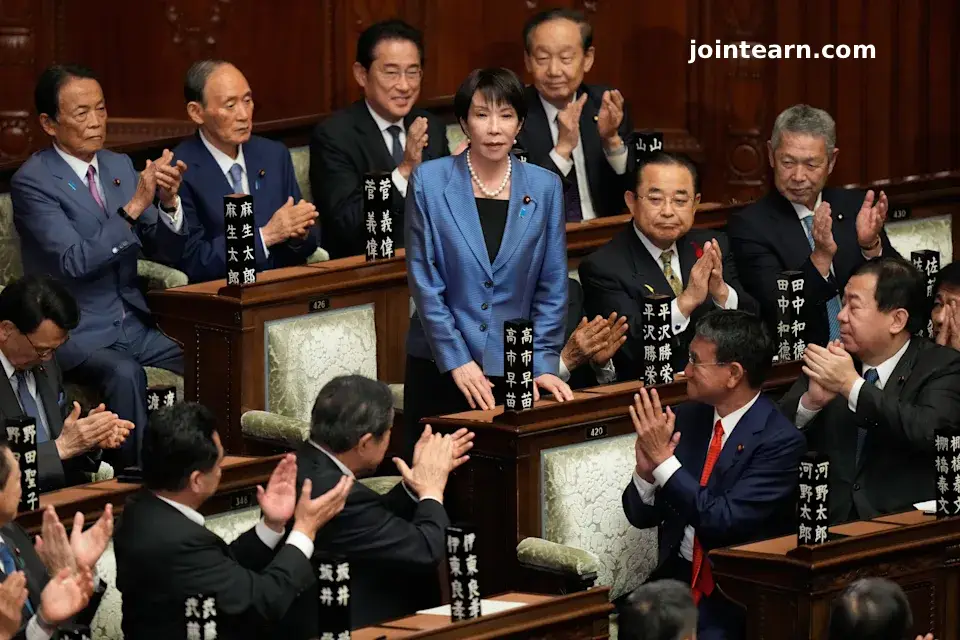
Tokyo, October 21, 2025 — Japan’s parliament elected ultraconservative Sanae Takaichi as the country’s first female prime minister on Tuesday, ending a three-month political deadlock following the LDP’s poor showing in July’s election.
Election and Coalition
- Takaichi, 64, won 237 votes in the lower house, narrowly above the majority, defeating opposition leader Yoshikoko Noda (149 votes).
- The LDP formed a last-minute alliance with the Osaka-based rightwing Japan Innovation Party (Ishin no Kai) after losing its longtime centrist partner, Komeito.
- Despite the coalition, Takaichi’s bloc remains short of a majority in both houses, meaning her government will need support from other parties to pass legislation.
Cabinet Appointments
- Chief Cabinet Secretary: Former Defense Minister Minoru Kihara
- Foreign Minister: Toshimitsu Motegi (ex-trade and foreign minister)
- Defense Minister: Shinjiro Koizumi (former Agriculture Minister)
- Internal Affairs & Communication: Yoshimasa Hayashi (former Chief Cabinet Secretary)
- Economy & Trade: Ryosei Akazawa (Ishiba’s former trade negotiator)
- Only three women were appointed, despite Takaichi’s earlier promises to increase female representation.
Policy Priorities
- Immediate focus on tackling rising prices and economic measures, with an emphasis on stabilizing households and boosting public confidence.
- Plans to strengthen the military, expand the economy, and potentially revise Japan’s pacifist constitution, following the legacy of Shinzo Abe.
- Foreign relations: Preparing for talks with U.S. President Donald Trump and regional summits.
Social and Political Stance
- Supports male-only imperial succession and opposes same-sex marriage and separate surnames for married couples.
- Has been associated with revisionist views of Japan’s wartime history and regularly visited Yasukuni Shrine, though recent gestures suggest a softening of hawkish rhetoric.
- Critics point to her conservative stance on gender equality and potential difficulty pushing progressive policies.
Outlook
Takaichi’s premiership is seen as a consolidation of ultraconservative policies, but her potentially weak parliamentary majority and limited diplomatic experience may constrain her ability to implement ambitious reforms. Her leadership will test whether Japan’s electorate supports a hardline, female-led government in a traditionally male-dominated political landscape.


Leave a Reply